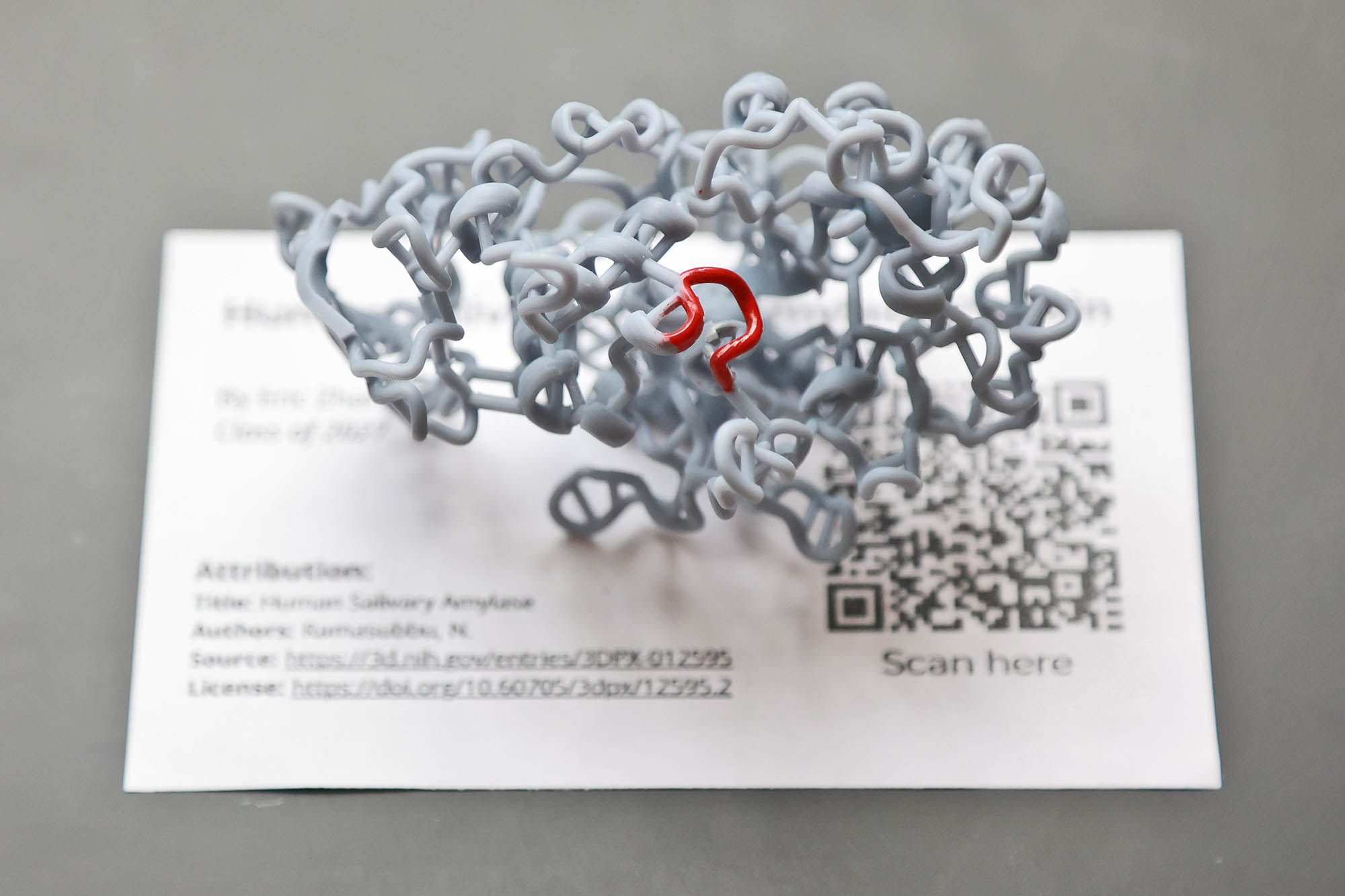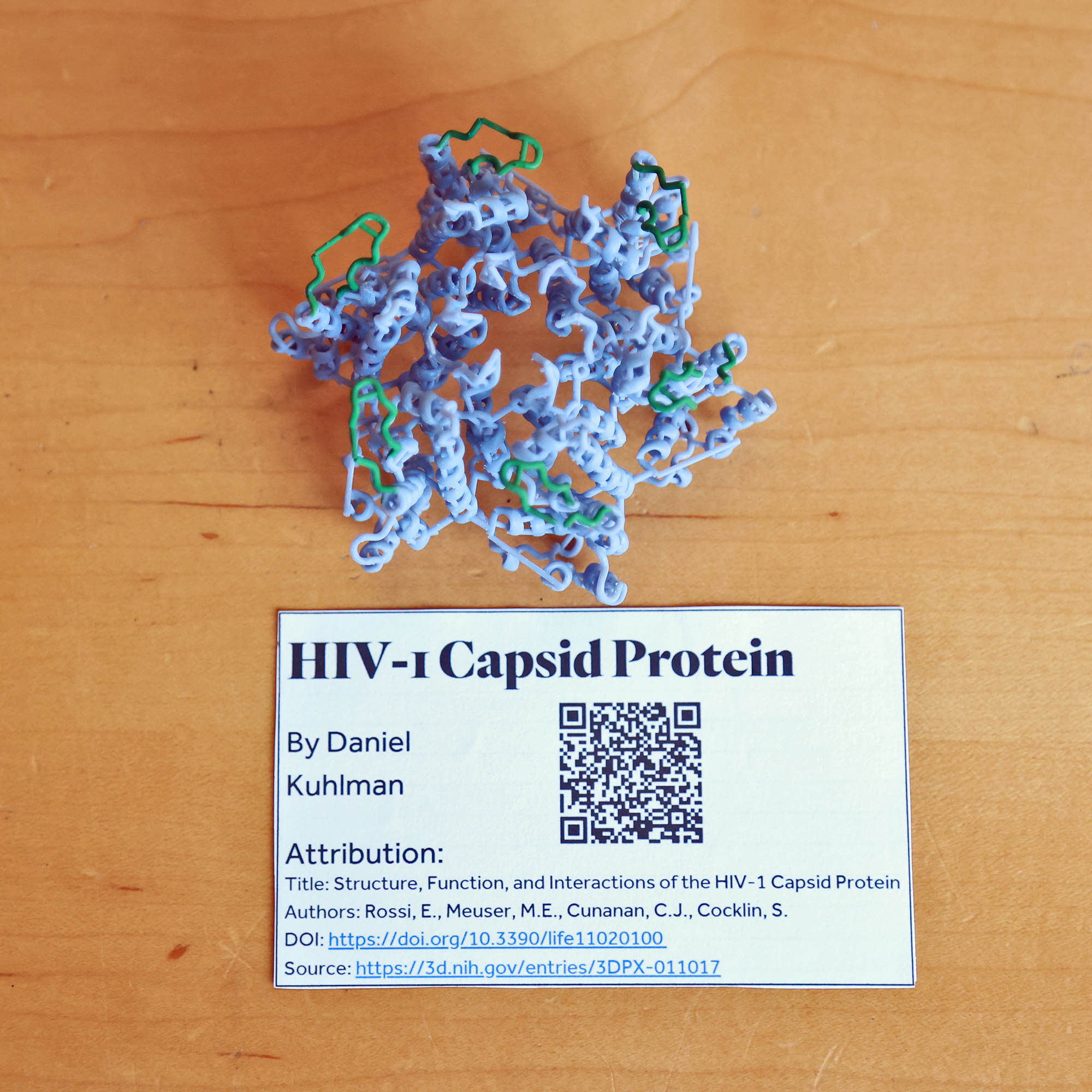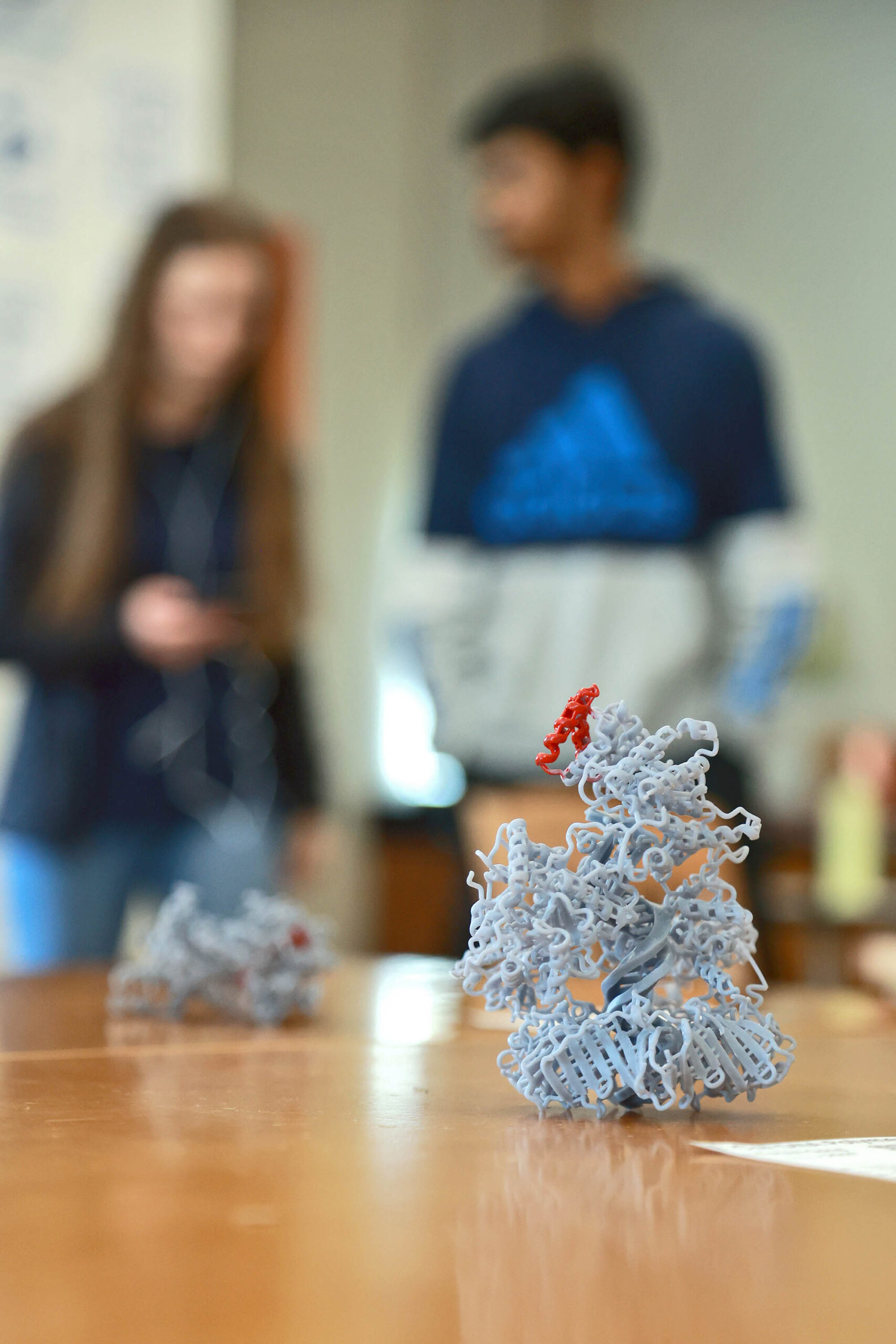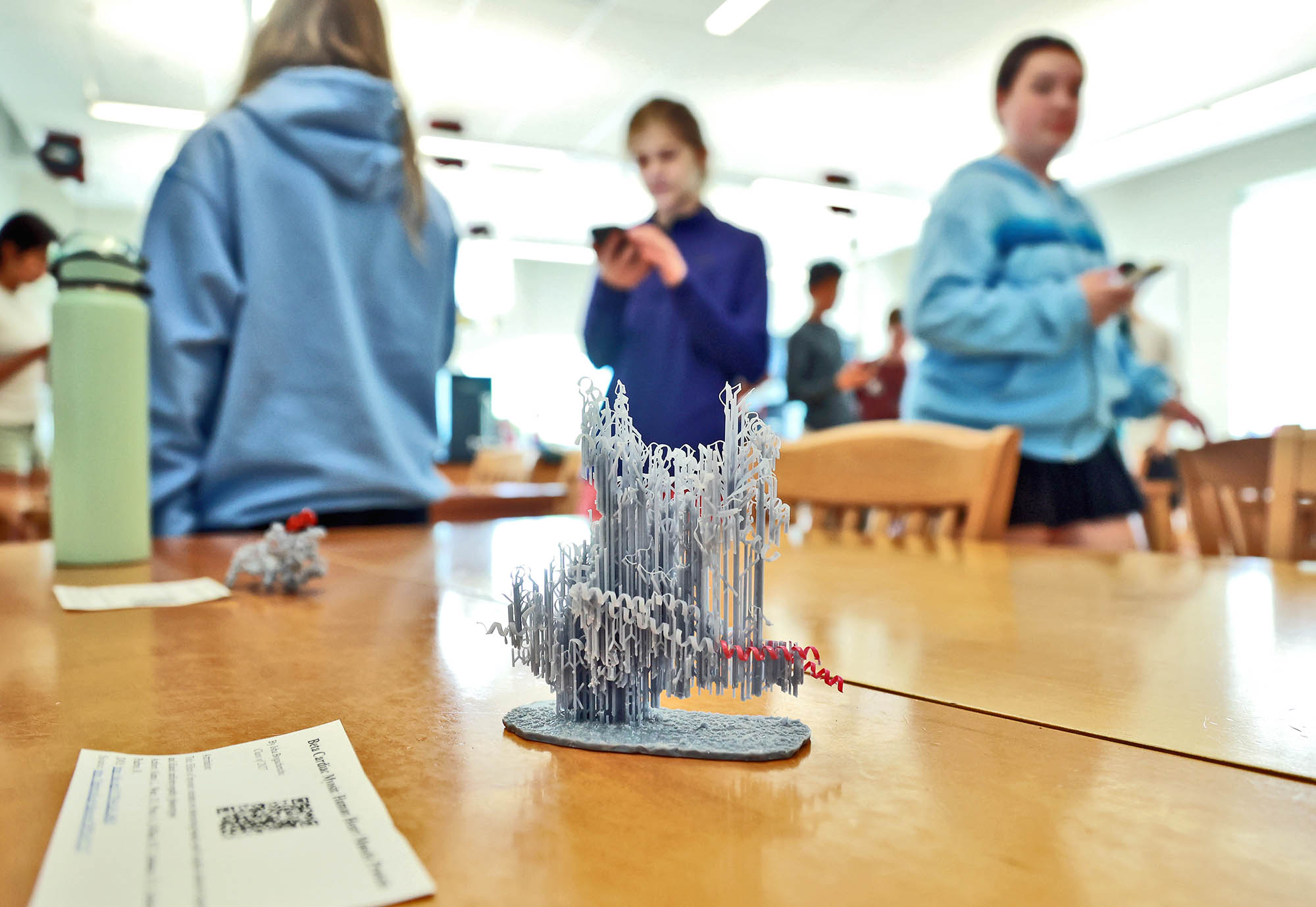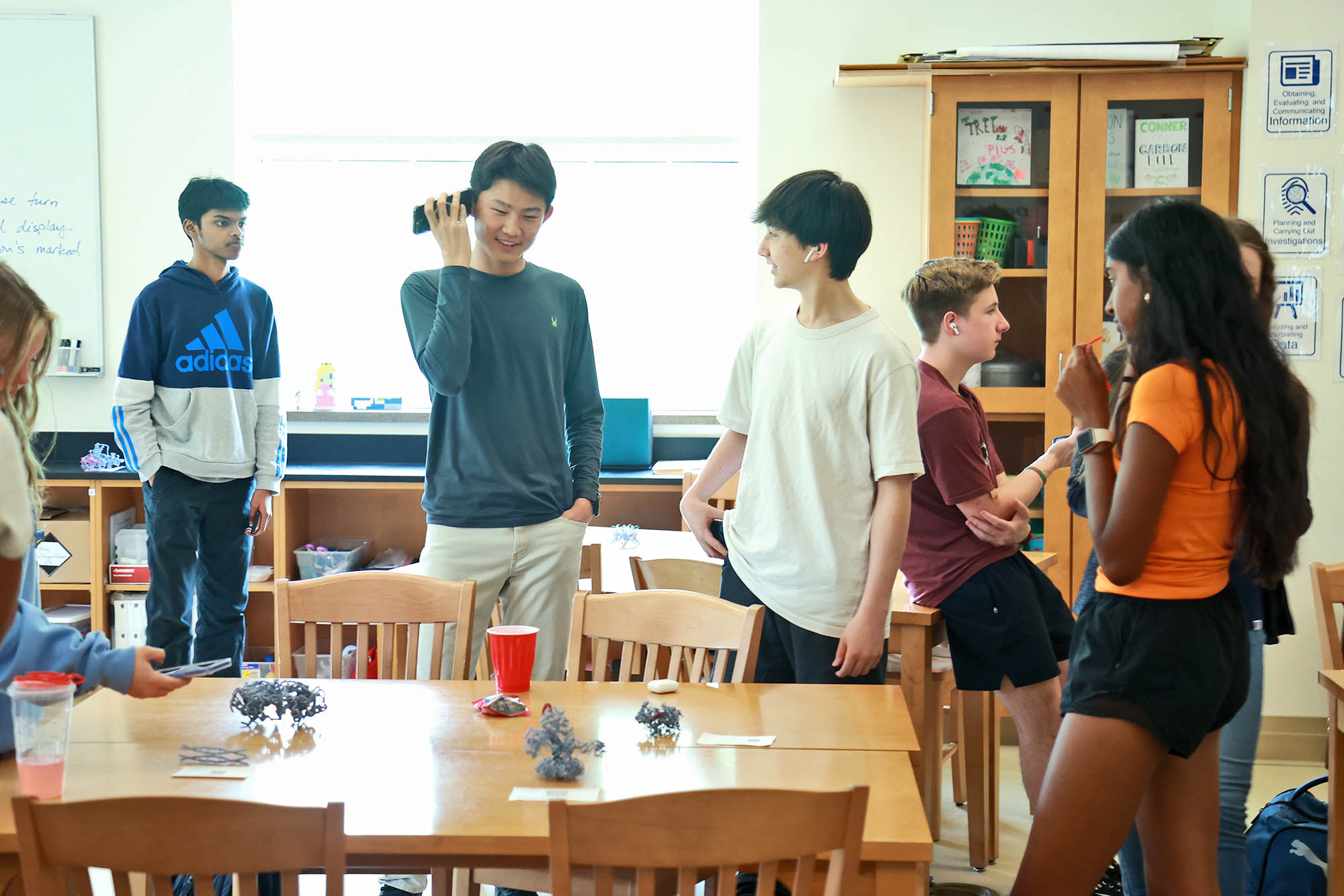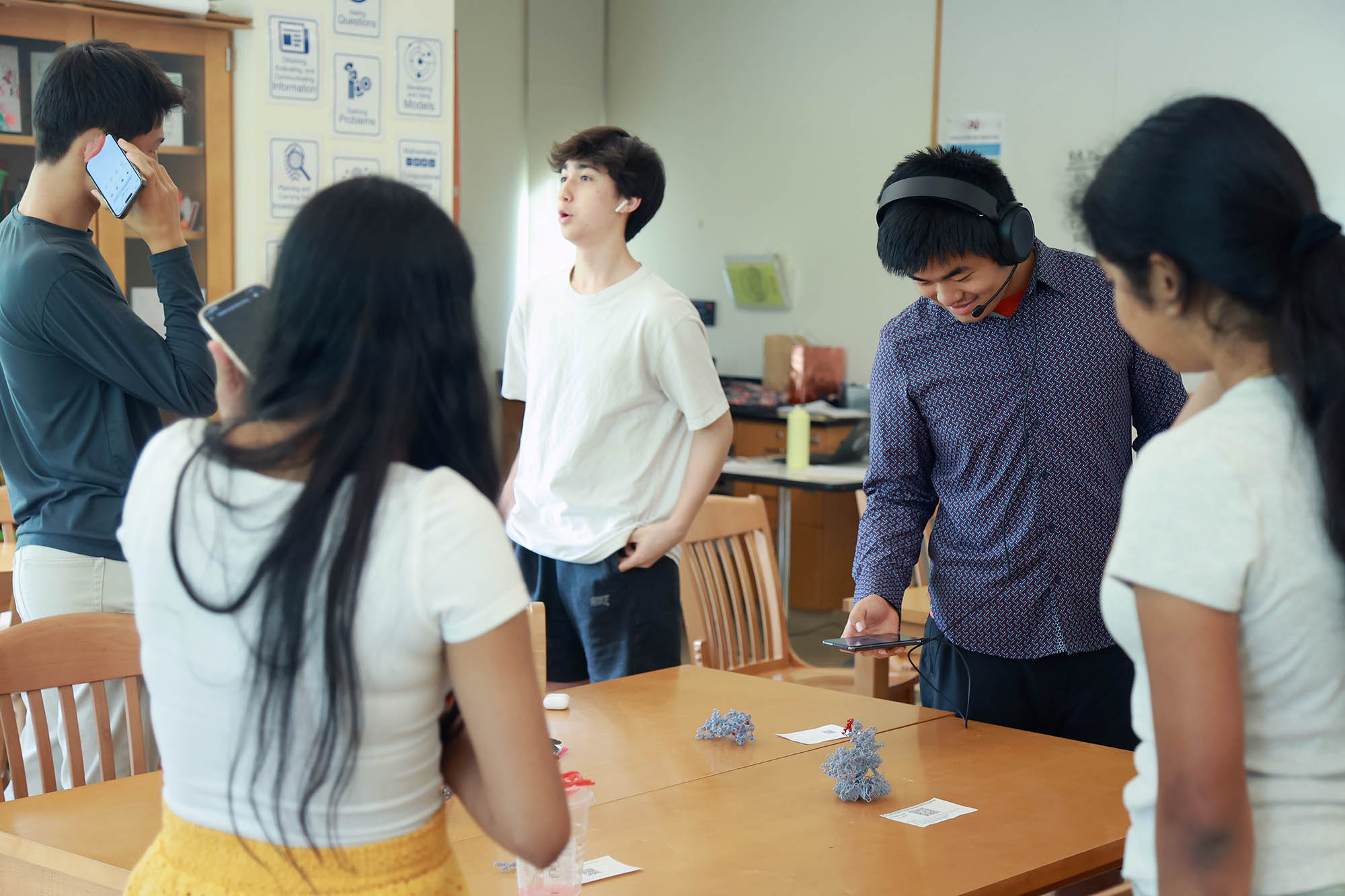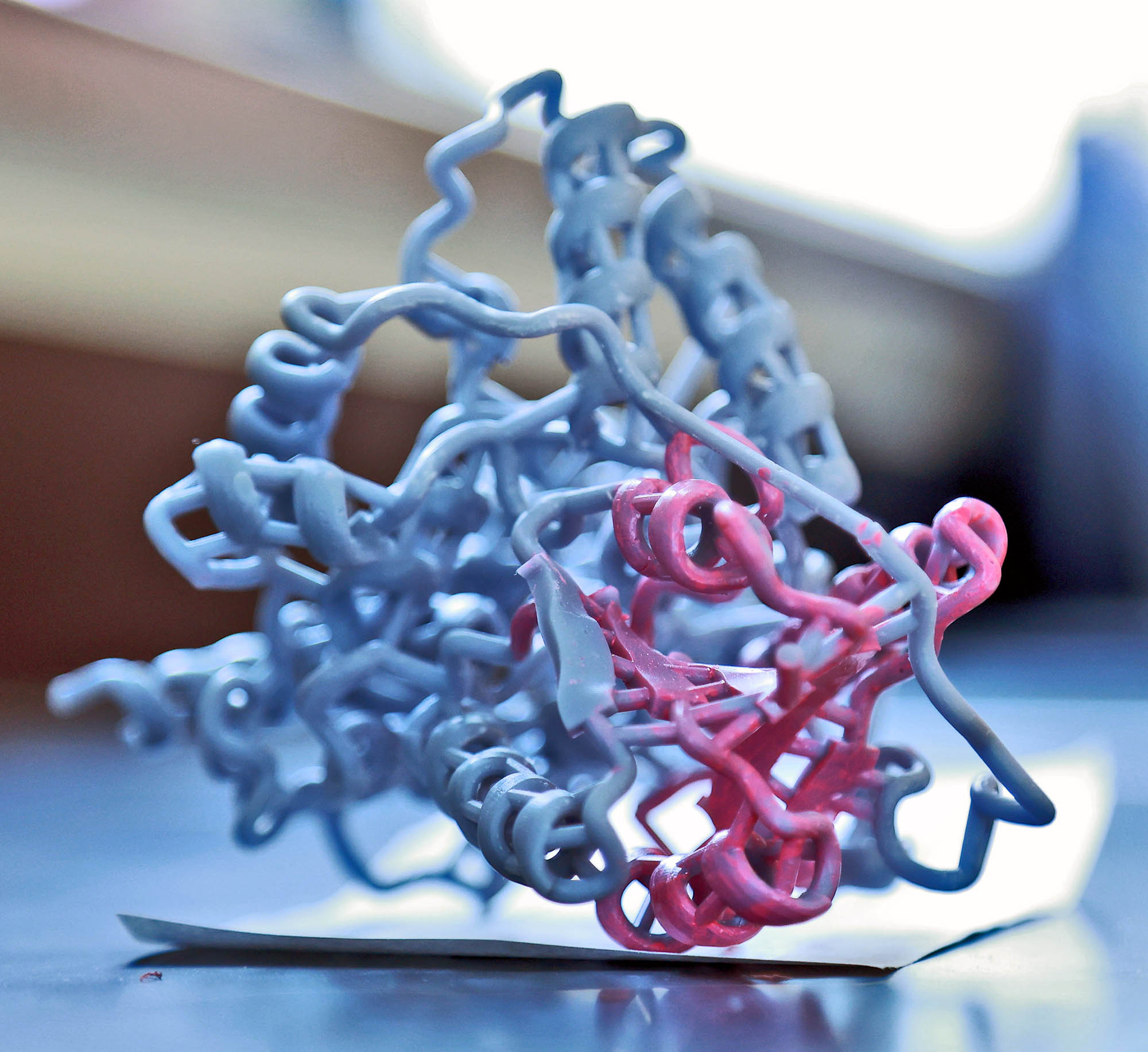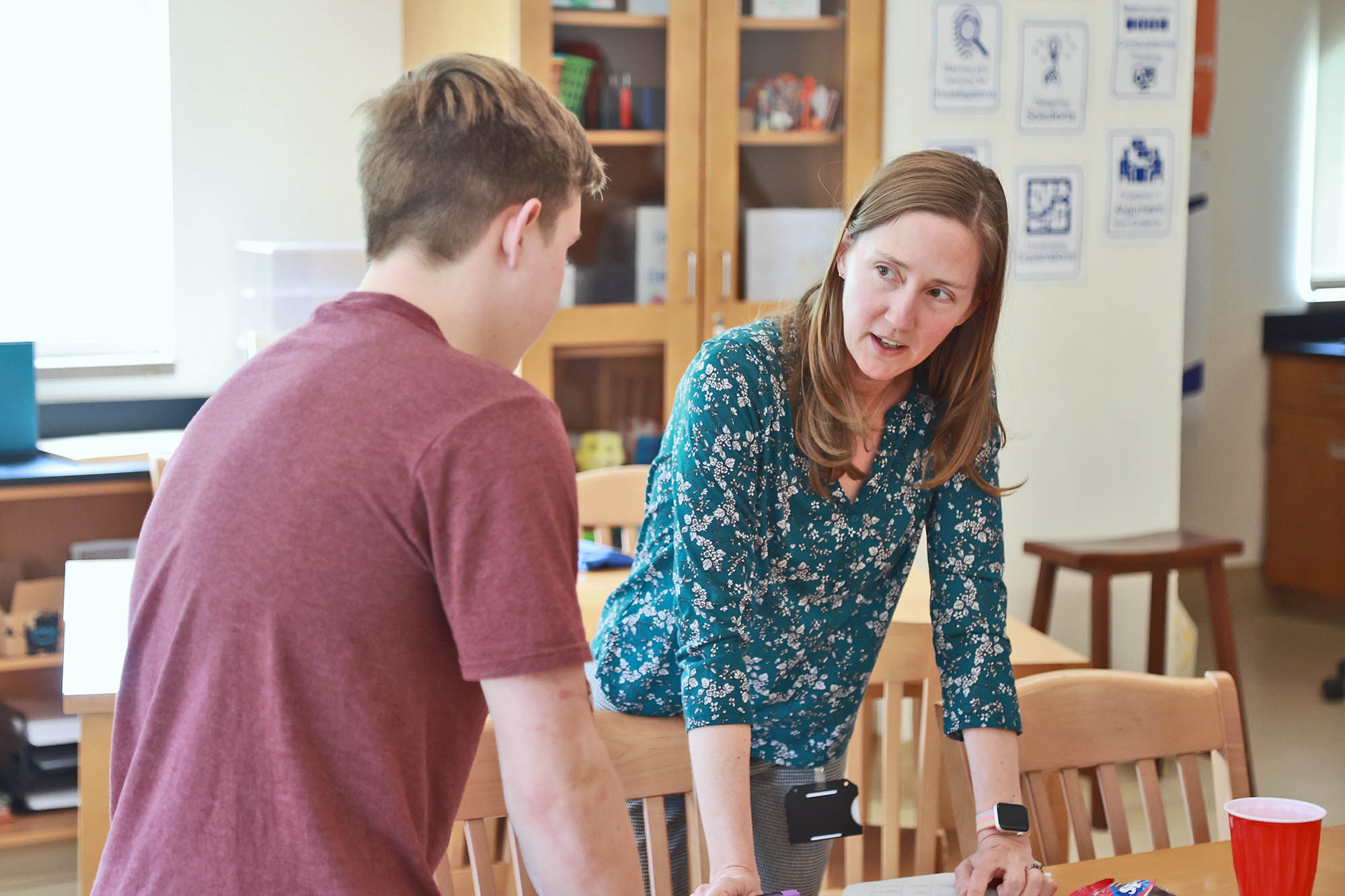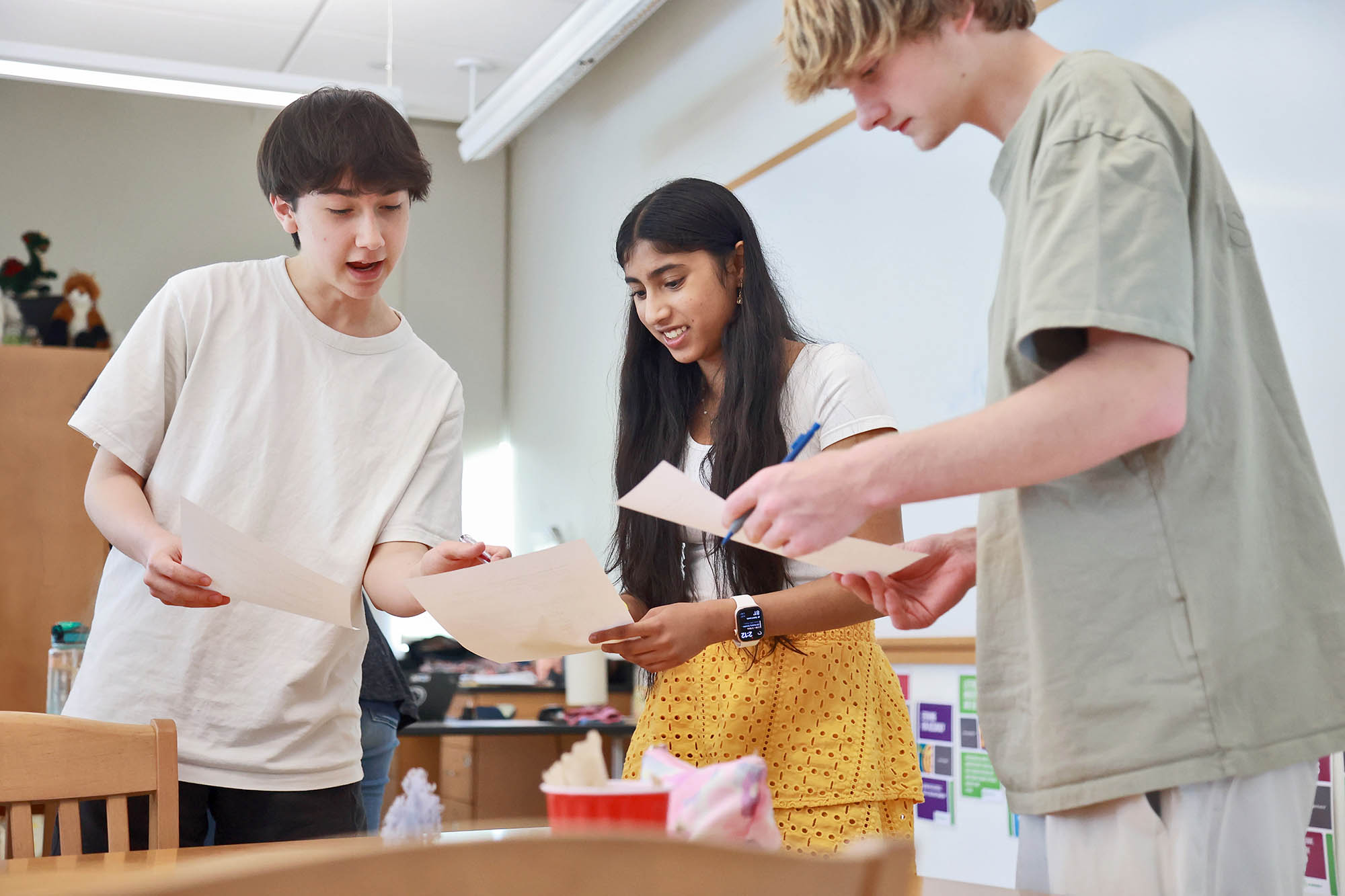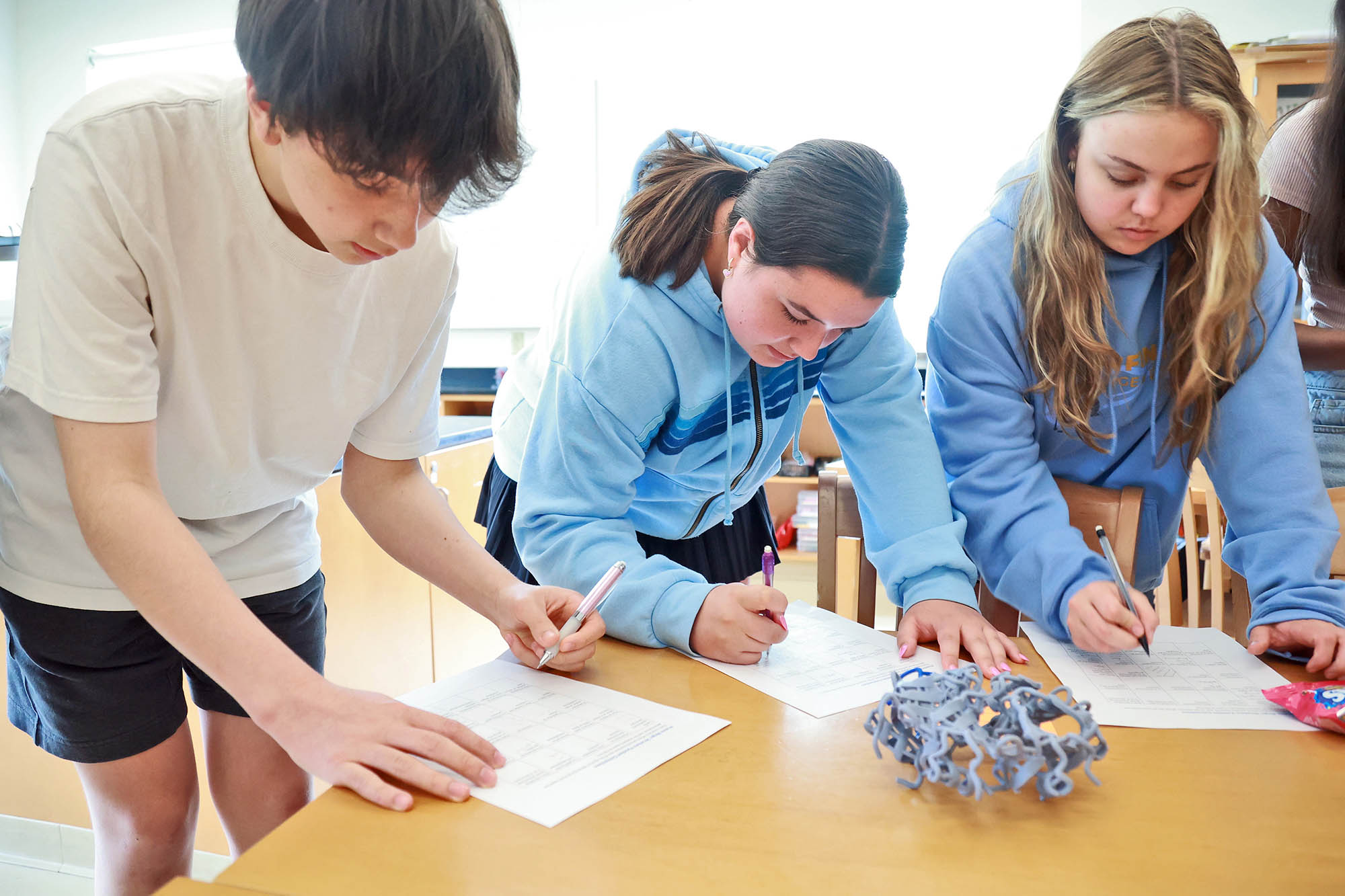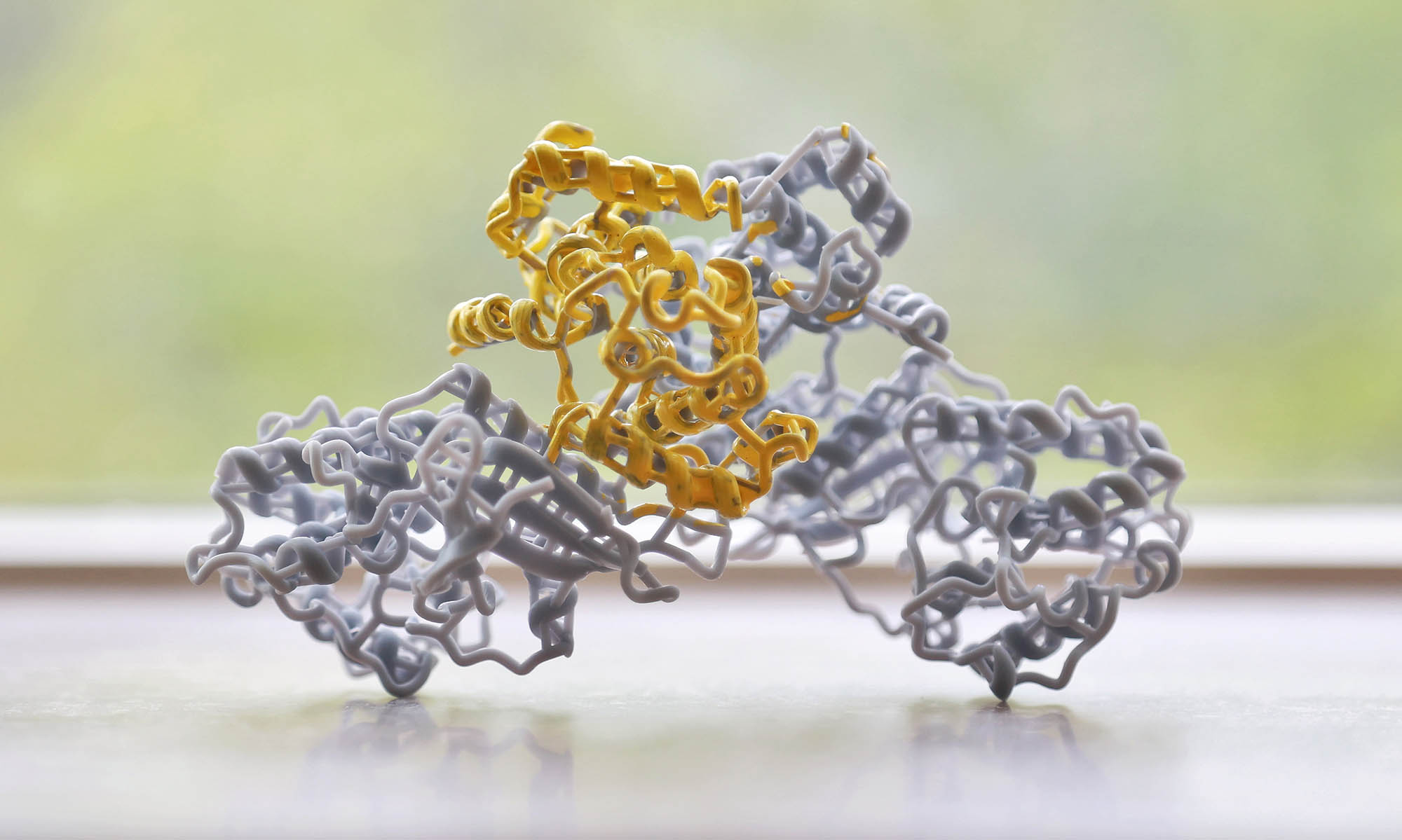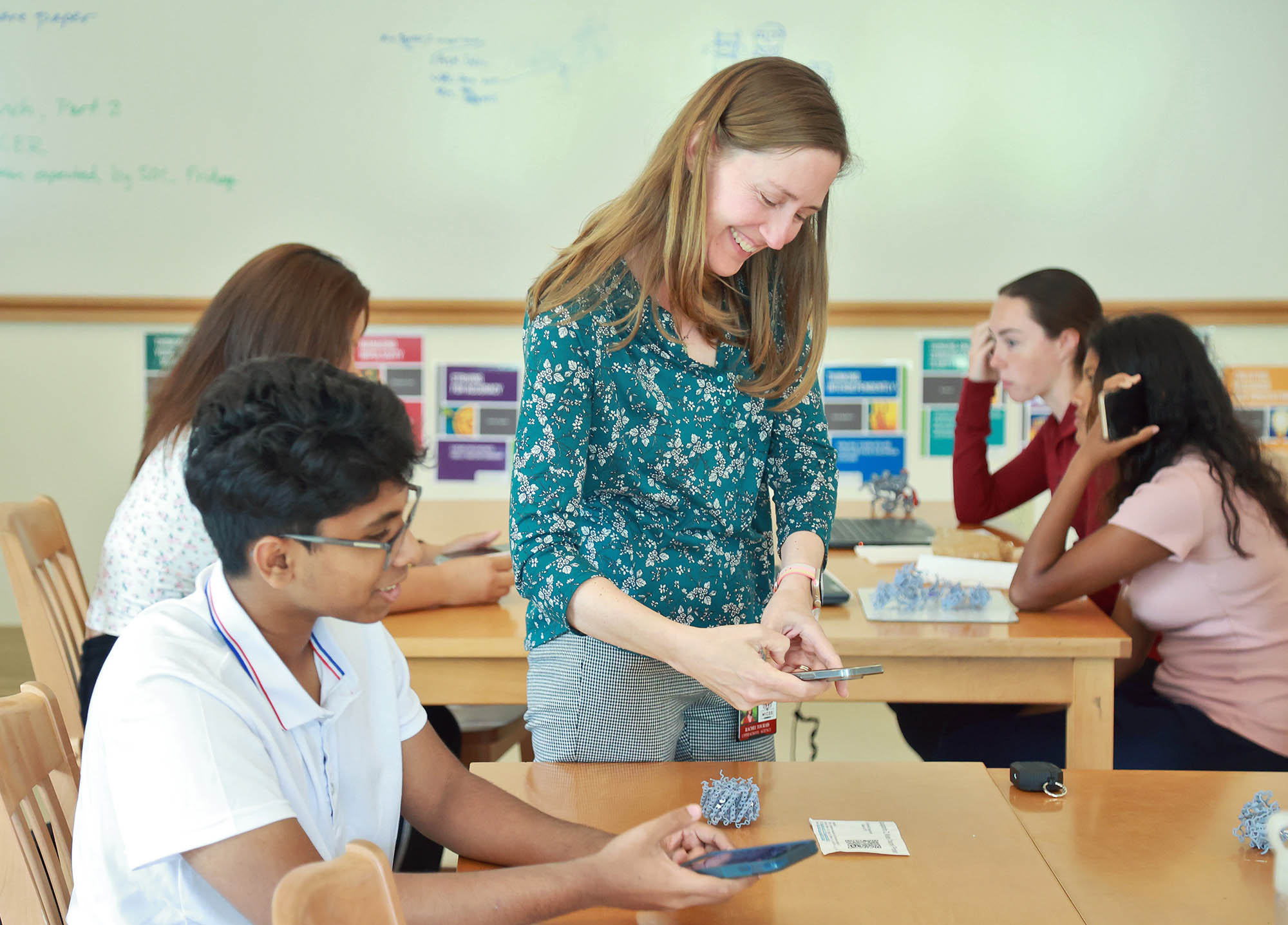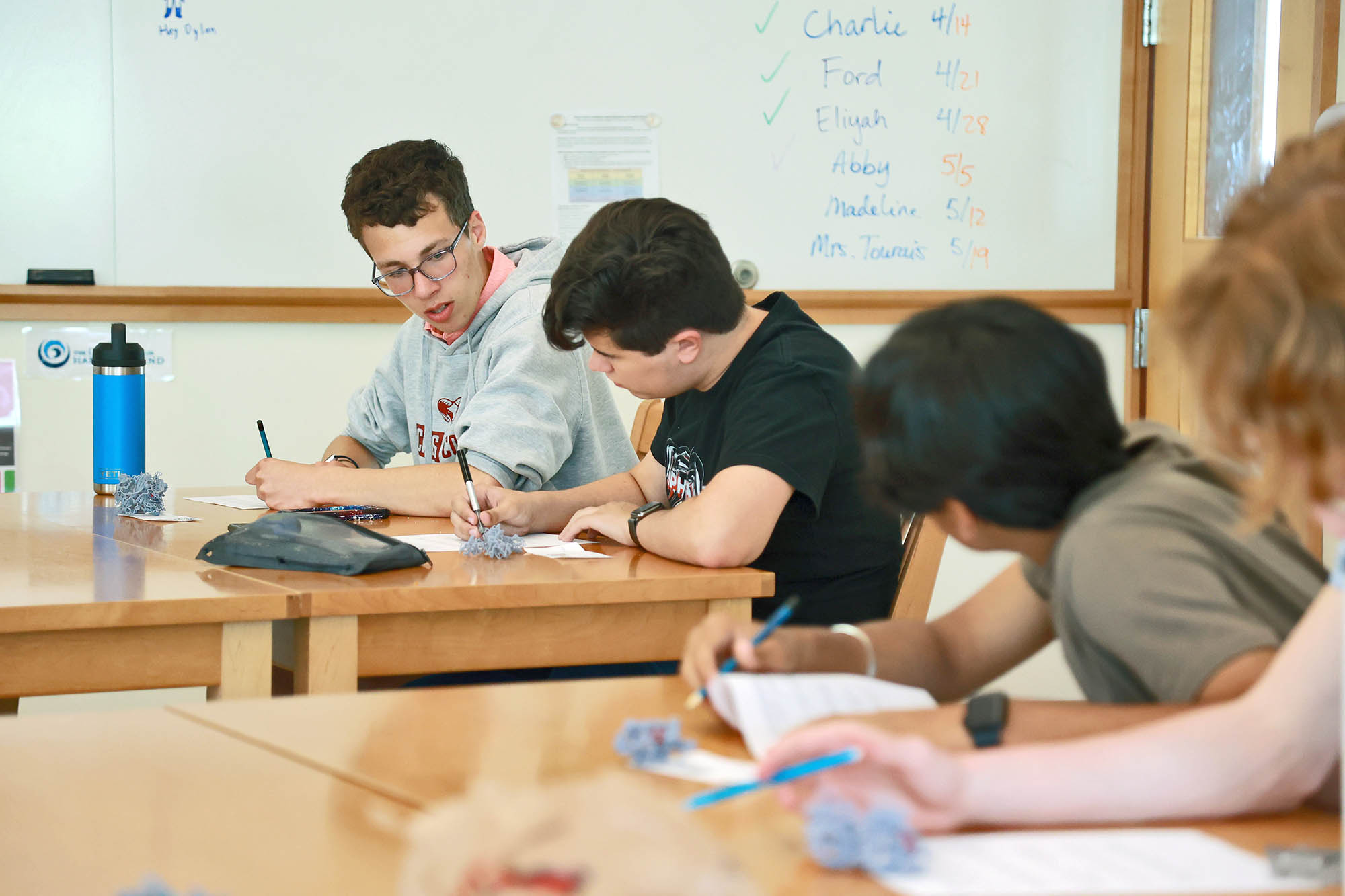Our tenth-grade accelerated science students have been working their way through an integrated curriculum of chemistry and biology and are culminating their year with a deep dive into the structures and functions of various proteins through project-based learning. Their understanding of bonding interactions, molecular forces, and chemical properties all coalesced into this final project.
“Proteins are the most diverse class of biological molecules, playing a crucial role in every biological process,” explained Upper School Science Teacher Rachel Tourais. “Proteins perform widely different tasks despite being composed of the same 20 amino acids.” This is possible because of the relationship between each protein’s structure (its complex three-dimensional form) and its function.
“The most surprising part of the protein project was realizing the depth of actual scientific research compared to what was covered in the paper,” said Eric Zhang ’27. “When the project started, the rubric seemed very demanding, requiring information and analysis of the protein on multiple levels. However, as I continued researching, I soon realized that the paper would only scratch the surface. For example, I only wrote about the human saliva form of alpha-amylase (my protein). Meanwhile, there were dozens of scholarly articles describing other bacterial forms of alpha-amylase and their various applications or processes, which were beyond the scope of the project.”
Learning more about individual proteins can be daunting for a high school science student, so Tourais set about harvesting the tools available at MICDS to help her students conduct research and understand the complex subject matter of scientific research papers, and then bring their discoveries to light in physical ways that enable them to easily share their findings with others.
Each student proposed two proteins to research, and Tourais ensured that none were duplicated. Common proteins include collagen, insulin, and antibodies. The goal is to perform a close study of function and structures. “That connection is a unifying concept in science,” said Tourais. “They are applying this connection specifically to proteins, which are wildly diverse and unique. There’s a really elegant connection between structure and function.”
Once the proteins were assigned, students set about answering Tourais’ broad, guiding questions that helped them determine where to go next in their research. The first stop: visiting with Upper School Librarian Katie Voss in McCulloch Library, where they learned how to access scholarly literature. “Ms. Voss was a great partner in introducing databases and primary source literature from journals,” said Tourais.
This literature, while valuable, is written for professional scientists and college-level studies. Most of the students in Tourais’ class are in 10th grade, and much of the content in these articles can be overwhelming. “The kids are open to this, but the material can be so dense,” said Tourais. “The job isn’t to understand the whole protein, but to use a protein to achieve the project expectations of identifying bonding patterns that they learned about over the course of the year.” In other words, students needed to learn how to extract just the information they needed for their projects without getting bogged down in the extensive reports. Enter artificial intelligence.
Tourais invited Elegan Kramer, Director of Instructional Technology and Digital Literacy, to the classroom. In preparation, students arrived with at least one journal article in PDF form, a summary of that article, and questions they had about the work. Tourais taught them to look at the architecture of each paper, identifying the introduction, the abstract, methods and results, conclusions, and acknowledgements. Kramer introduced an AI tool called ChatPDF, which is a language model that can be fed a scholarly article and asked to distill key points and confirm what the students had gleaned. “AI could help lower the energy barrier, to use a chemical analogy; it can reduce intrinsic cognitive load to make this literature more accessible,” said Tourais.
Kramer showed students not only how to upload the article to the tool, but how to set up the appropriate prompts. For instance, in this case, students might type, “I am a tenth-grade student in an accelerated biochemistry class” to start. Tourais explains that the more information you can feed the AI model, the better the response you’ll get. “These prompting lessons are transferable,” she notes. “I’m glad that my students learned skills in prompting at an academic level.” They could also instruct the model to be as concise as possible, noting that they can always return to ask for more detailed information at a later time.
“Many of the scholarly articles I came across were dense with information and academic jargon. ChatPDF helped by summarizing the articles into key ideas,” said Zhang. “I especially found it useful to have ChatPDF check the article against our project rubric to identify whether it contained relevant information. I believe this skill of gathering what I need and knowing when to move on to other sources will be very helpful for future research-related projects.”
“What made this language model in particular so great for students is that it targets a specific way to use this tool, and establishes clear boundaries about what the tool is best used for,” said Tourais. “The goal is to make comparisons first. Students summarize their own five key insights first, and then compare their understanding to the AI-generated results. Students have to have skin in the game, ensuring they’re not bypassing their own understanding before AI comes in.”
Tourais notes that Kramer has consistently reminded teachers that the best way to ensure appropriate use of AI is by being the human in the loop. “Make sure you are a part of this and using it as an authorized assistant,” she said. After forming their own insights and then asking ChatPDF to distill what it found as insights, the students spent time evaluating where they matched and where they differed. “The goal is to have a conversation, a thread that is different than a search,” said Tourais. Students were given time to practice tailoring their requests and refining the responses, probing deeper each time with new questions.
“The kids were flabbergasted,” she said. “They walked out thinking, ‘This i the most helpful thing.’ They were eager to replicate this with other scholarly articles, which means they have time and capacity to search for additional sources.” Even if students find only one helpful sentence in an article, all those sources will help them synthesize the best understanding of how the whole protein works that fits their project requirements. Tourais noted that the references for this project were robust, and many students exceeded the expectation of using one scholarly article. “They’re less afraid to find and read these articles on their own,” she said. “They can read and verify their comprehension with AI assistance. It opens up the accessibility of this content. The kids have gotten more out of these amazing structures because the mental stretch isn’t so much.”
Zhang said, “My favorite part of the project was creating the image figures for our paper using the digital model on the Protein Data Bank. It was satisfying to experiment with the models until I finally found the structural component I had read about during my research. Editing screenshots of the molecular details also helped me with the writing process, as it made me think more clearly about what to highlight in order to explain how everything comes together.”
Students were instructed to cite not only their scholarly articles but also the OpenAI conversation with their work. They must note that they had help from an existing language model.
Finally, Tourais pulled in a third partner: Science Teacher and Maker & Robotics Coordinator Brian Purlee. Under Purlee’s guidance, the students printed 3D models of their proteins and sometimes painted sections they wanted to highlight as a specific function. These models round out their 10-page research papers and audio clips, providing their peers (and all science nerds at MICDS) a great way to immerse themselves in the world of proteins. The students proudly conducted a gallery walk to share their findings.
“I really enjoyed this project as it allowed me to learn more about a protein that is present in so many parts of our bodies,” said Tara Sadasivam ’27. “I did keratin as my protein and I was super surprised that keratin only has alpha-helices, which are coils. Keratin, which makes up your hair, skin, and nails, is a series of long coils that are connected together. I used AI in this project in the form of ChatPDF, to analyze and understand the scientific articles we used in class. These articles were made for professionals in the field, so it was hard for us to understand that complexity at first but it got easier with ChatPDF. This is a skill I will definitely take to my other classes and in future years to help with research as it gets more complicated. My favorite part of the project was 3D printing my protein, it was such a cool process and something we hadn’t really done before.”
Tourais reported that her students not only enjoyed the project, but are retaining what they’ve learned (and the excitement about it) even as they move on to the next unit. “A fun moment when we started our new unit: Two students high-fived when I discussed the interaction between the proteins they researched from the project: helicase and DNA polymerase for the purpose of DNA replication,” she shared. Curious about these topics? Ask an Accelerated Science 10 student to show you how to use artificial intelligence to better understand!

